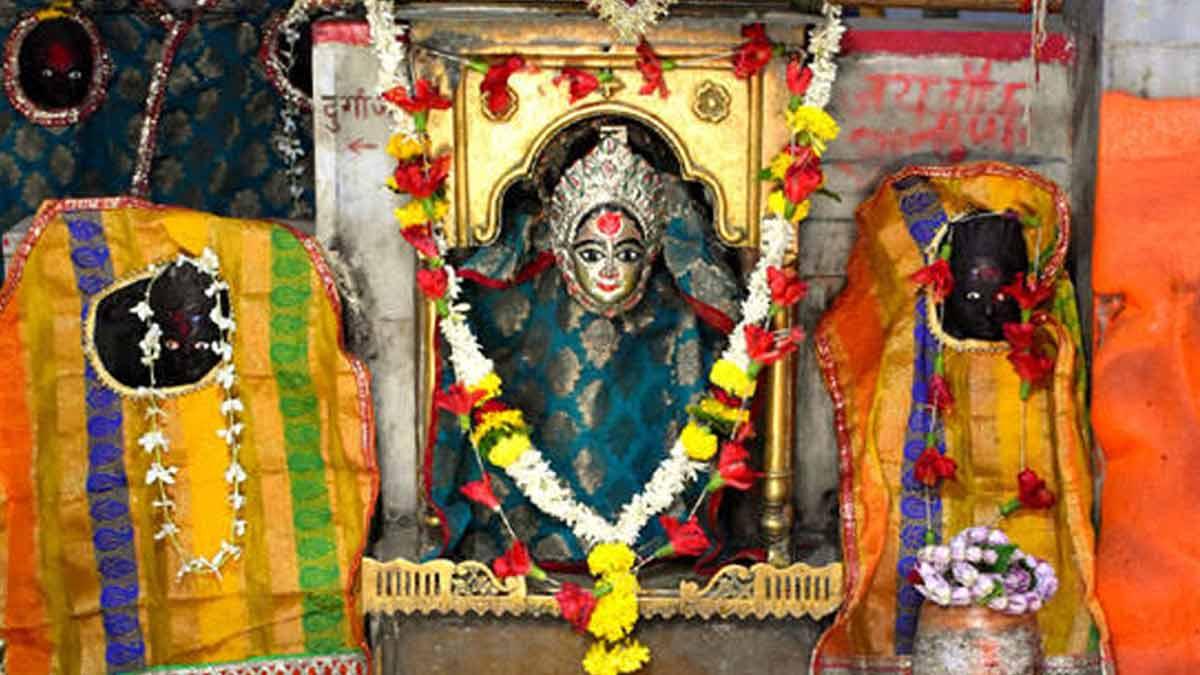Tagged: Bhagwati, Brahmaji, Brahmin, Brihaspati, Chadraghanta, Day3, Devi, Durga Maa, Fasting, Mata Chandraghanta, Navratri, Navratri Day 3, Rituals, sanatan, Stories
- This topic has 0 replies, 1 voice, and was last updated by .
-
AuthorPosts
-
October 16, 2023 at 5:54 pm #1451Up::0
प्रसादं तनुते मह्यं चंद्रघण्टेति विश्रुता॥
या देवी सर्वभूतेषु मां चन्द्रघण्टा रूपेण संस्थिता।
नमस्तस्यै नमस्तस्यै नमस्तस्यै नमो नमः॥
Mata Chandraghanta is a form of the Hindu goddess Durga, and her history is deeply rooted in Hindu mythology and scriptures, particularly the Puranas and various religious texts. She is worshipped on the third day of the Hindu festival of Navaratri, which is dedicated to the nine forms of Goddess Durga.
1. Origin:
Mata Chandraghanta is said to have derived her name from the “Chandra” (moon) and “Ghanta” (bell). She is often depicted with a half-moon (Chandra) adorning her forehead and a bell (Ghanta) in her hand, symbolizing peace and serenity. She is also known as Chandika, Rannchandi, and Chandi.
2. Mythological Significance:
According to the Puranas, Chandraghanta’s form emerged during the battle between the goddess Mahakali and the demon kings, Shumbha and Nishumbha. She is depicted with ten arms, each holding different weapons, and she rides a lion. Her ferocious appearance represents her role as a protector and warrior against evil forces.

3. Appearance:
Mata Chandraghanta is often depicted as a beautiful goddess with a golden complexion and three eyes. She wears white attire and is adorned with various ornaments. The crescent moon on her forehead is one of her distinctive features.
4. Blessings and Worship:
Devotees believe that worshipping Mata Chandraghanta bestows strength, courage, and protection. She is revered for destroying the enemies of her devotees and bringing peace and prosperity into their lives. Her blessings are sought by those facing challenges or conflicts.
5. Textual References:
The history and significance of Mata Chandraghanta can be found in various Hindu scriptures and texts, including the Devi Mahatmya (part of the Markandeya Purana) and the Devi Bhagavata Purana. These texts narrate the battles and manifestations of Goddess Durga, including her transformation into Chandraghanta.
Mata Chandraghanta’s worship during Navaratri is an essential part of the festival, and devotees offer prayers, perform aarti, and make offerings to seek her divine blessings. It is believed that she removes obstacles and protects her devotees from harm.
Attachments:
You must be logged in to view attached files. -
AuthorPosts
- You must be logged in to reply to this topic.